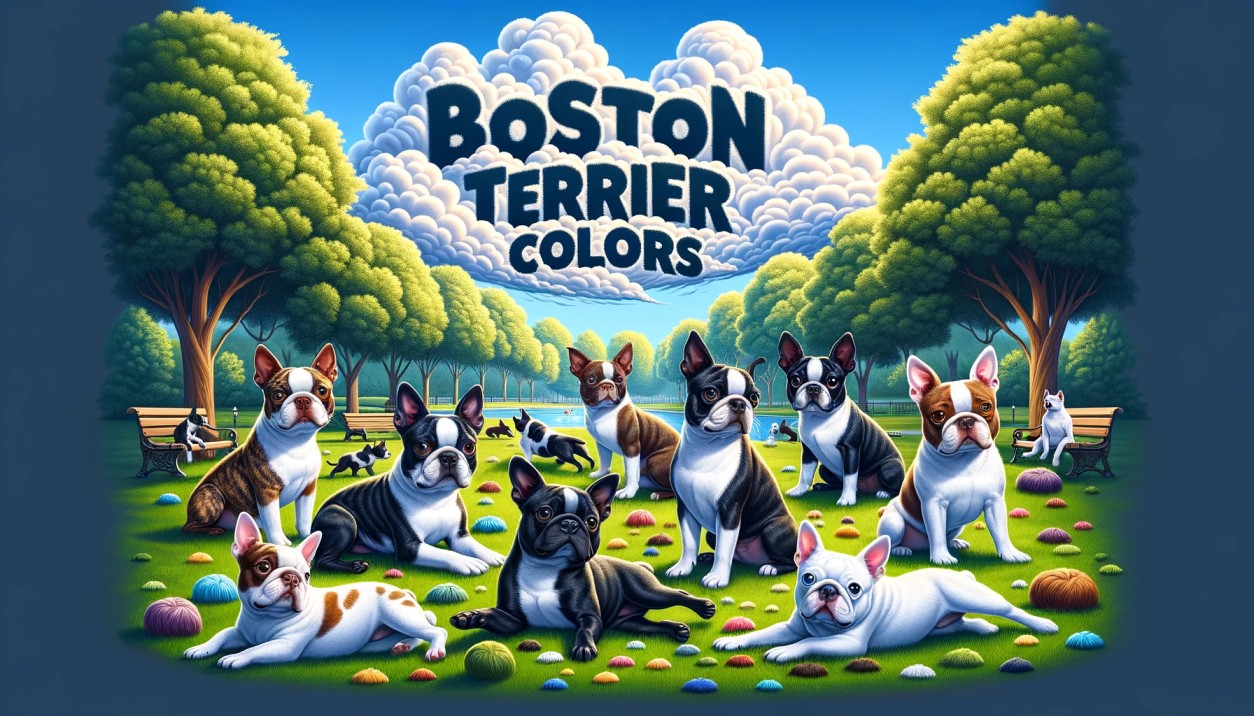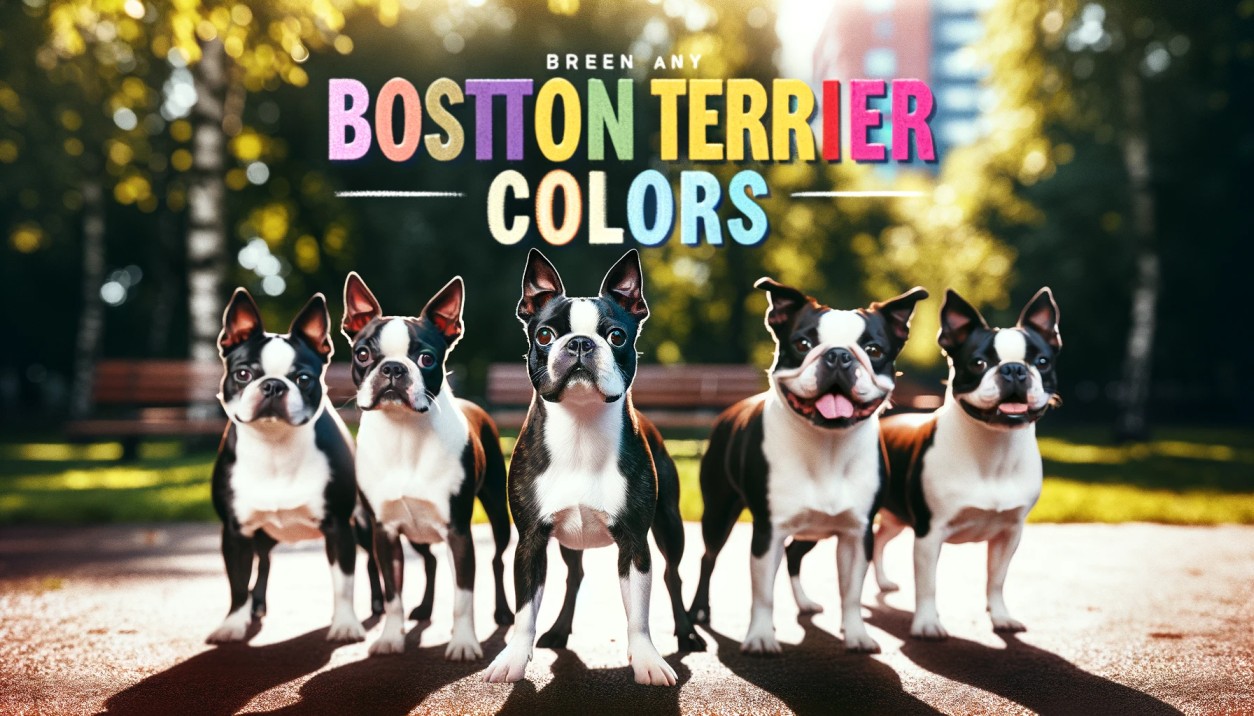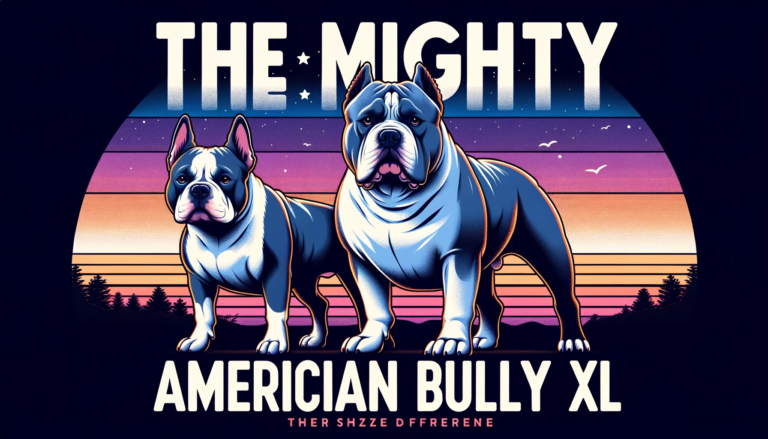Boston Terrier Colors: Your Complete Guide
Introduction
In this article, complete information about Boston Terrier Colors is given. Welcome to the world of Boston Terriers! A breed known not just for its lively and friendly nature but also for its diverse range of colors.
This guide will take you through the vibrant palette of Boston Terrier colors, shedding light on their history, the recognized shades, and even some rare hues you might not have heard of.
The Origin and History of Boston Terrier Colors
The Boston Terrier has a rich history that dates back to the late 19th century in Boston, Massachusetts. Originally bred from a mix of the White English Terrier and the English Bulldog, these dogs quickly became a favorite in American households.
- The breed’s early colors were influenced by its ancestors, with shades ranging from dark brindle to light brown.
- As the breed gained popularity, selective breeding played a significant role in refining and establishing the distinct colors we recognize today.

Recognized Boston Terrier Colors
When it comes to official recognition, the American Kennel Club (AKC) has set standards for Boston Terrier colors. The main recognized shades include:
- Black & White: A classic combination, often with a tuxedo pattern.
- Brindle & White: A mix of dark and light stripes, giving them a unique tiger-stripe appearance.
- Seal & White: A dark brown, almost black color with a red cast when viewed in the sun.
Rare and Unrecognized Colors
While the above colors are widely recognized, there are some shades that, although beautiful, aren’t officially acknowledged by breed standards. These include:
- Blue: A sleek, grayish-blue hue.
- Lilac: A rare blend of blue and brown.
- Red: A deep, rich red similar to auburn.
The reason some colors aren’t recognized is often tied to breed purity concerns and potential health issues associated with certain color genes.
The Genetics Behind Boston Terrier Colors
Diving a bit into science, the colors of Boston Terriers, like all dogs, are determined by their genetics.
- Each puppy inherits one color gene from each parent, which dictates its coat color.
- Some colors are dominant, while others are recessive, leading to the wide variety of shades we see.
- For instance, two brindle Boston Terriers can produce a black & white puppy if they both carry the recessive gene for that color.
In the world of Boston Terriers, color is more than just a coat – it’s a glimpse into the breed’s history, genetics, and the love and care that goes into breeding these wonderful dogs. Whether you’re a proud Boston Terrier owner or an admirer, understanding their colors adds another layer to the appreciation of this delightful breed.
Health Implications Related to Certain Colors
Certain colors and patterns in Boston Terriers, like many breeds, can be linked to health issues.
- Blue-eyed or merle Boston Terriers, for instance, might be more susceptible to deafness or vision problems.
- This makes genetic testing crucial, especially for potential breeders, to ensure the health and well-being of the pups.
Choosing a Boston Terrier: Does Color Matter?
When deciding on a Boston Terrier, many potential owners wonder if color plays a role beyond aesthetics.
- While some believe that color can influence a dog’s temperament, there’s no scientific evidence to back this up. It’s essential to debunk such myths.
- The primary concern should always be the dog’s health and well-being, rather than its coat color.
The 5 AKC Boston Terrier Colors
Boston Terriers are known for their tuxedo-like appearance, but did you know there are several recognized colors for this breed? Here’s a breakdown of the five colors recognized by the American Kennel Club (AKC):
- Seal & White: This color appears almost black but has a reddish tint when viewed in the sunlight. The white markings are typically on the chest, face, neck, and legs.
- Black & White: A classic tuxedo look, this color combination is one of the most common. The black is deep and rich, contrasted with bright white markings.
- Black Brindle & White: This color features a black base with lighter, irregular streaks or stripes. The white markings are similar to the other color combinations.
- Brindle & White: A mix of dark and light streaks or stripes, without the black base seen in Black Brindle & White.
- Seal Brindle & White: This is a combination of the seal color with the brindle pattern, accompanied by white markings.
Rare Boston Terrier Colors
While the AKC recognizes the above colors, there are some rare colors that aren’t standard but can still be found in some Boston Terrier colors:
- Lilac: A diluted chocolate color, often with a hint of blue.
- Blue: A diluted black color, giving the coat a blueish hue.
- Brown: Also known as chocolate, this color is not as common in Boston Terriers.
- Red and White: A rich, reddish-brown color with white markings.
- Fawn: A light tan or beige color.
Health Problems associated with some Colors
Certain colors in Boston Terriers are associated with health problems:
- Platinum (All White): Boston Terriers with an all-white coat, often referred to as platinum, can have a higher risk of deafness.
- Merle: This pattern can be associated with various health issues, including eye and hearing problems.
List of Coat Patterns
Apart from the colors, Boston Terriers can also have different coat patterns:
- Brindle: Streaks or stripes of dark and light colors.
- Tuxedo: A solid color (usually black or brindle) with white markings on the chest, face, neck, and legs.
- Piebald: Large, irregular patches of two colors.
- Splash: Mostly white with patches of another color.
FAQs on Boston Terrier Colors
As Boston Terriers gain popularity, many questions arise about their vibrant colors. Here are some frequently asked ones:
-
Why are some colors not recognized by the AKC?
- The AKC sets standards based on the breed’s history and health implications. Some colors, while beautiful, might be linked to health issues or not align with the breed’s historical standards.
-
Does the color of a Boston Terrier affect its temperament?
- No, a Boston Terrier’s temperament is influenced by its upbringing, training, and genetics, not its color.
-
How can I know if my Boston Terrier colors is rare?
- Research and consultation with breed experts or clubs can provide insights into the rarity of specific colors.
-
What is the rarest color Boston Terrier?
- The lilac or champagne color is considered one of the rarest for Boston Terriers.
-
How many colors do Boston Terriers come in?
- Boston Terriers primarily come in three standard colors recognized by the AKC: black & white, brindle & white, and seal & white. However, there are other non-standard colors like blue, red, lilac, and more.
-
What color is a blue Boston Terrier?
- A blue Boston Terrier has a coat that appears grayish-blue. Their nose and pads are also usually blue-gray.
-
Are red Bostons rare?
- Red Boston Terriers are less common than the standard colors but are not as rare as lilac or champagne. They have a deep, rich red or auburn coat.
-
What 2 breeds make a Boston Terrier?
- The Boston Terrier originated from a cross between the White English Terrier and the English Bulldog.
-
Are Boston Terriers expensive?
- The price of a Boston Terrier can vary based on factors like pedigree, breeder reputation, and color. On average, they can range from $600 to $1,200, but rarer colors or champion lines can cost more.
-
Why are Boston Terriers so special?
- Boston Terriers are often called the “American Gentleman” because of their tuxedo-like markings and gentle disposition. They’re friendly, adaptable, and have a unique and charming personality, making them special to many owners.
-
What is a perfect Boston Terrier?
- A “perfect” Boston Terrier would align with the breed standards set by the AKC in terms of size, proportions, coat color, and temperament. However, perfection is subjective, and many owners would argue that their Boston Terrier’s unique quirks make them perfect.
-
Are Boston Terriers cute dogs?
- Yes, many people find Boston Terriers adorable due to their expressive faces, compact size, and distinct tuxedo-like markings.
-
What is the most famous Boston Terrier?
- While many Boston Terriers have gained fame on social media or in local communities, one of the earliest famous Boston Terriers was Sergeant Stubby, a war dog from World War I, although he was more of a mix than a purebred.
· What color dog is rare?
- In the broader world of dogs, colors like merle, lilac, or isabella can be considered rare in certain breeds. The rarity often depends on the specific breed in question.
Conclusion
Understanding the Boston Terrier colors is more than just a visual delight; it’s a journey into the breed’s history, health, and the dedication of breeders. As admirers or potential owners, it’s our responsibility to prioritize the well-being of these dogs. Whether you’re choosing a Boston Terrier based on its color or its playful nature, always advocate for responsible breeding and consider adoption as a heartwarming option.




